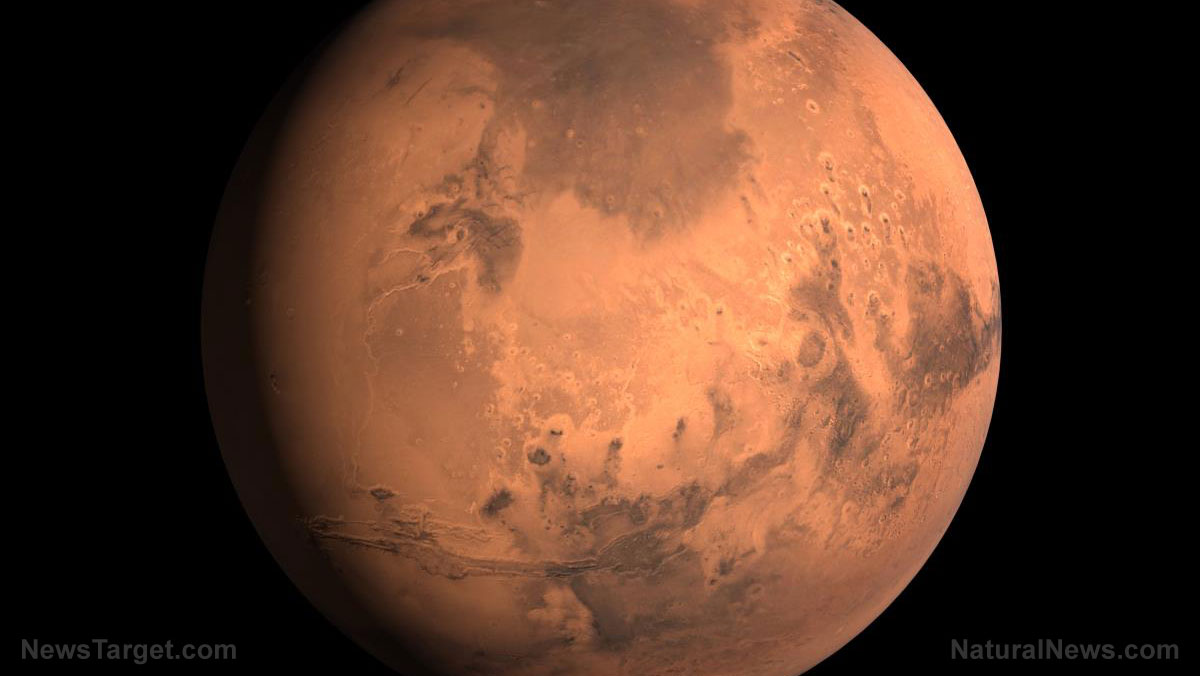 Parler
Parler Gab
Gab
- NASA’s Mars Reconnaissance Orbiter (MRO) discovered wave-like sediment features resembling Earth’s solifluction lobes, suggesting Mars experienced freeze-thaw cycles in its past.
- The Martian formations, imaged by HiRISE, mirror patterns in Arctic and mountainous areas on Earth, hinting at historical interactions between liquid water and regolith.
- Martian lobes are 2.6 times taller than Earth’s, likely due to weaker gravity, but their exact age (recent or ancient) and formation process remain uncertain.
- These features may indicate past climate cycles that created habitable conditions, aligning with earlier findings of organic molecules and fueling future astrobiology missions.
- The study underscores the importance of analyzing such terrain for biosignatures, guiding missions like Mars Sample Return and NASA’s Artemis program.
Earth’s colder regions offer clues to Mars’ geological mysteries
The Martian formations, captured by MRO’s High-Resolution Imaging Science Experiment (HiRISE) camera, resemble solifluction lobes found in Earth’s Arctic and mountainous areas. These lobes form when frozen ground partially thaws, causing soil to slowly creep downhill. On Earth, such features signal past environmental conditions conducive to liquid water interactions with regolith—the layer of loose material covering bedrock. “We’ve never had such detailed images to analyze Martian lobes before,” said study lead author JohnPaul Sleiman, a doctoral student at the University of Rochester. “These patterns could reflect similar processes to Earth’s, where freezing and thawing cycles sculpt landscapes over millennia.” The study highlights that Mars’ lobes are 2.6 times taller than Earth’s on average, a discrepancy researchers attribute to Mars’ weaker gravity, which allows sediment waves to grow taller before collapsing.Analyzing HiRISE data reveals larger than expected Martian formations
The team compared Mars’ slopes to those in Colorado’s Rocky Mountains, using computational models to simulate how gravity and temperature variations influence lobe shapes. Co-author Rachel Glade, an assistant professor at the University of Rochester, likened the process to liquid instabilities: “These are giant, slow-motion patterns akin to paint dripping down a wall — but on a planetary scale,” she noted. While the study identifies similarities in geometry, questions remain about whether Mars’ lobes formed recently or millions of years ago. The lobes’ size and distribution at high latitudes suggest they may owe their origin to ground ice, a critical factor in sustaining life’s building blocks. However, researchers caution that without on-site analysis, confirming the role of liquid water — or its absence — is challenging.Implications for Mars’ climate history and search for life
The findings revive discussions about Mars’ climatic shifts over billions of years. Earlier missions, such as the Curiosity rover’s detection of ancient organic molecules, hinted at habitable conditions. “These lobes could mark intervals when Mars’ climate cycled between frozen and wet states, creating environments hospitable to microbial life,” Sleiman explained. The study also underscores why NASA’s Artemis program, aiming for human exploration of the Moon and Mars by the 2030s, prioritizes studying surface features. Understanding how terrain forms aids in identifying sites with preserved organic material—a priority for the planned Mars Sample Return mission. Meanwhile, recent discoveries of recurring slope lineae (RSL), dark streaks suspected of involving seasonal water flows on slopes, remain contentious, highlighting Mars’ complex hydrological history.A glimpse into Mars’ geological history and beyond
The revelation of Earth-like soil patterns on Mars deepens the connection between our planet and its neighbor, offering a roadmap for unraveling Mars’ hidden past. While the study confirms a shared geological language between Earth and Mars, unanswered questions about the timing and extent of these processes persist. Future missions equipped to probe Martian regolith directly could unlock whether these lobes harbor biosignatures or clues to ancient water reserves. As Sleiman noted, “Every pattern we decode brings us closer to knowing if Mars ever had or still holds the secrets to life beyond Earth.” As scientific exploration pushes forward, such discoveries remind us that Mars remains a planetary enigma — a silent record keeper of early solar system evolution and a potential crucible for life far from home. Sources for this article include: LiveScience.com OpenTools.aiU.K. study finds omega-3s shape kinder, smarter kids
By Ava Grace // Share
Governments continue to obscure COVID-19 vaccine data amid rising concerns over excess deaths
By patricklewis // Share
Tech giant Microsoft backs EXTINCTION with its support of carbon capture programs
By ramontomeydw // Share
Germany to resume arms exports to Israel despite repeated ceasefire violations
By isabelle // Share










